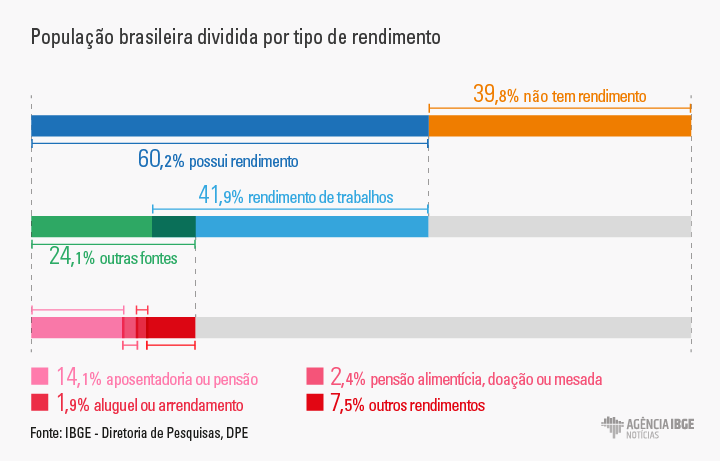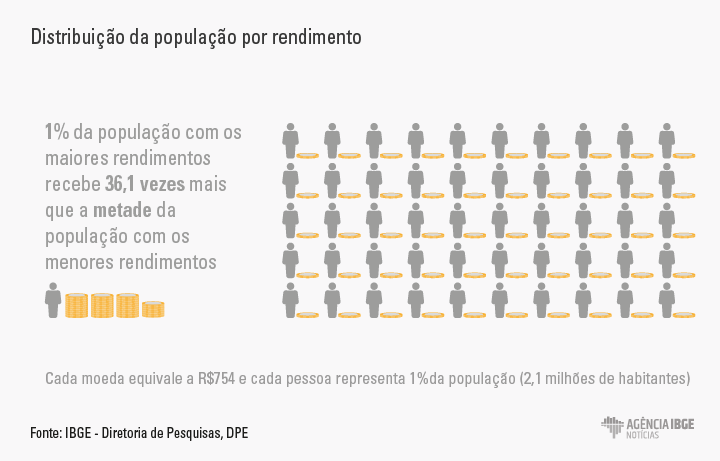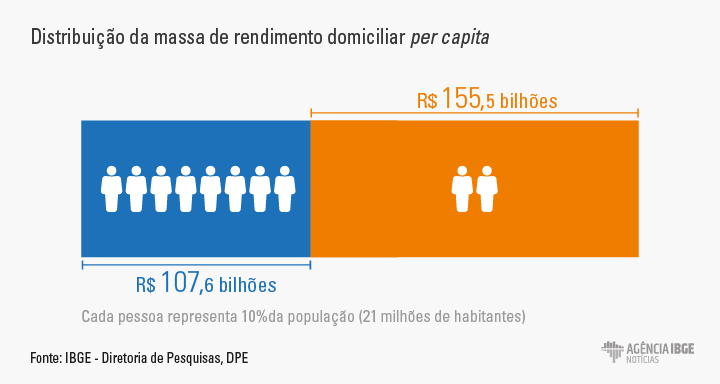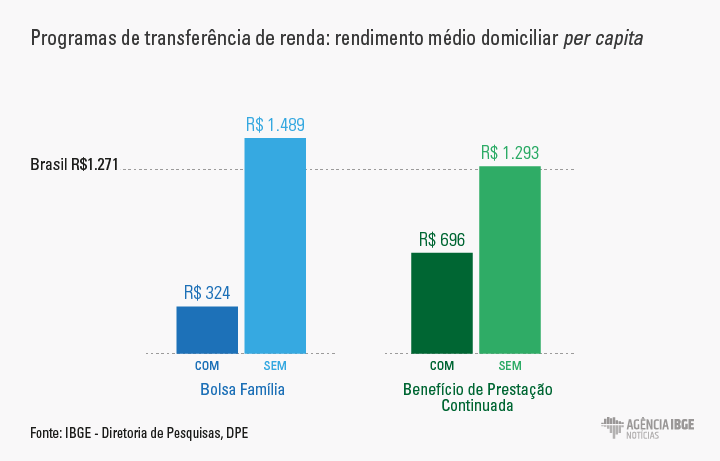Continuous PNAD
10% of population concentrate nearly half of Brazilian income
April 11, 2018 10h00 AM | Last Updated: June 05, 2018 10h56 AM
The Earnings from all sources module of the Continuous National Household Sample Survey - Continuous PNAD, released today by the IBGE, pointed out that the per capita household wage bill was 263.1 billion in 2017. Of this total, 43.3% were concentrated in 10% of the Brazilian population with the highest earnings, a parcel above that of those 80% with the lowest earnings. Check these and other results of the survey in the infographs below.
Cimar Azeredo, IBGE Coordinator of Labor and Income, stresses that those 10% concentrate the biggest wage bill in the Northeast: 45%: "particularly in Bahia, where this concentration hits 48.9%. Inequality is smaller in the South: 37.2%. In Santa Catarina, for instance, those 10% highest earnings hold 32.4% of the wage bill.
Of the 207.1 million persons living in Brazil in 2017, 124.6 million (60.2%) had some type of earnings, either from work (41.9% of the persons) or from other sources (24.1% of the persons), like retirement, rent and cash transfer programs.

If every person with some type of earnings in Brazil receives the same monthly value, it would be R$2,112, but it is not what happens. Half of the workers with the lowest earnings receive, on average, R$754, whereas those 1% with the highest earnings receive, on average, R$27,213, i.e., 36.1 times more.

Another way to look at the distribution of earnings in Brazil is through the per capita household income, which is computed like this: all the earnings of a household are added and then divided by the number of residents.
In 2017, the average per capita household earnings was R$1,271. Of the wage bill of R$263.1 billion, those 20% of the population with the highest earnings held more than those 80% with the lowest earnings.

In 2017, 13.7% of the households in Brazil received cash from the Bolsa Família Social Program and 3.3%, from the Continued Installment Benefits - BPC.





















